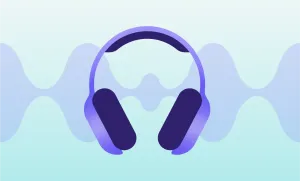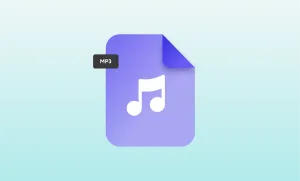During the past few years, podcasting has grown in popularity, and the art of podcasting is developing very quickly. After recording a podcast interview, the next step is to turn the audio into a podcast for distribution with the help of audio editing.
First of all, we should state that there are 2 different sides of audio editing. The first is by knowing how to control your podcast editing software or a tool and dive into the editing process physically. The second side is the creative side, which is to decide when to edit, where to cut, what effects to add, where to have breaks, etc. And both sides of your brain are working on the audio editing process.
Audio editing is one of the most crucial processes in podcasting. Before creating a strong podcast community for your show and gathering listeners, the most important thing is a podcast that sounds impressive. You need to know all backstage processes to have high-quality audio, as good audio doesn’t happen itself. This is all about audio editing.
Here are some audio editing tips and techniques which aim to guide and help you to improve your podcast quality.
1․ Master your audio editing tool
For audio editing, you will need a DAW (Digital Audio Workstation). It is software to record your podcast. You can use it while recording or import already recorded audio and work on it.
Podcastle offers an online audio editor that is free to sign up to and is also available as part of paid plans. It's simple to use and designed specifically for editing podcasts.
As an alternative you can use Audacity. It is a free audio editing software. It can be complex to use for beginners though and as it is free, it lacks the support that comes with paid software.
If you have a Mac and are searching for a free tool, you can go on with Garageband. It is an excellent audio editing tool, especially when you look for some default settings to get the job done without going deep too much.
2․ Use separate mics during the interview.
To have excellent quality for your interview, you should have a mic for each participant.
Otherwise, there will be a background hiss that will be hard to remove later. It is always better to start with a qualified recording than to edit it later. To have a good recording, it is recommended to use the same types of mics for both you and your co-host. This will help to keep the sound on the same level and will make the audio editing process easy.
Enhance your editing skills with intuitive podcasting software for creators.
3. Arrange a comfortable environment
The Environment of recording is important to how the end result will turn out.
The best option is, of course, a professional studio. But if it is not possible, it could be a room where you will have absolute control with a carpet and curtains that will reduce the echoes on your recording.
Close all windows so as not to have any outside noise. Select the quietest time for your recording, like kids playing in the neighborhood. You should avoid recording at noisy times as this will reduce the audio editing work later.
Don’t record in public places or outside.
If you do record in a less than ideal environment you can try using Magic Dust from Podcastle to transform the audio into studio-quality sound.
4. Prevent background noise
One of the most significant hitches is the background noise. It can be any noise near you and can occur depending on how you speak into your mics. To prevent any kind of whistle or unpleasant noise, it is recommended to use pop filters. It is a kind of screen that is used as a protection filter for your mics. It can reduce any whistling or popping which can occur during the recording.
5. Keep it simple
The most important thing worth mentioning is not to overdo it and keep it simple. You may want to use several effects and filters, add additional sound effects, or cut the conversation with the help of the newly studied app skills.
But it is important to remember that the main thing about podcasting is natural conversation. Over-editing may create a frustrating result for the listener and will make it difficult to concentrate on your content.
6. Get prepared beforehand
Our last tip is not about the actual audio editing process. It is more about its planning. According to Pro Editors, good planning can have a significant impact on the recording quality. It is recommended to do adequate preparation beforehand, not to leave everything until the last minute, especially when you have a co-host.
You should test everything before the start- the setup, check the audio volumes, if there is any background noise, check if the mics are fixed right and correctly set up. Decide how you will open the episode, mark the points you will need to hit during the conversation, think beforehand about how to wrap up and finally close the episode, etc.
FAQs
Best audio format for podcasts
The best audio format for your podcast is a high-quality MP3 file of 128kbps or more. You can use higher quality bitrates and file types, but when they are compressed for distribution on podcast networks the quality will be impacted.
Wav or MP3 for podcasts
MP3 is a perfectly good file format for the majority of situations where someone will be listening to a podcast. If you want the highest possible quality you can choose WAV, but this will increase hosting costs and download data size.
What is sound production?
Sound production refers to the process of creating and manipulating audio or sound content for various purposes, such as music, podcasts, film, and broadcasting. It involves recording, editing, mixing, and mastering sound to achieve desired quality and artistic effects in a controlled and organized manner.
What is audio production?
Audio production means the creation, recording, editing, and post-processing of sound content, encompassing music, podcasts, radio, and more. It combines technical skills with artistic creativity to produce high-quality audio, ensuring clear and engaging communication through various mediums. It's essential for the entertainment, media, and communication industries.
There is a huge variety of tips that can be considered while doing good audio editing. We shared 6 of them, which will help you a lot in your daily work if you turn them into your habits. Everyone has his approach to editing, it differs, as you know yourself and your audience better. But with correct preparations and simple techniques, you can save your time of editing and focus more on the content quality.








